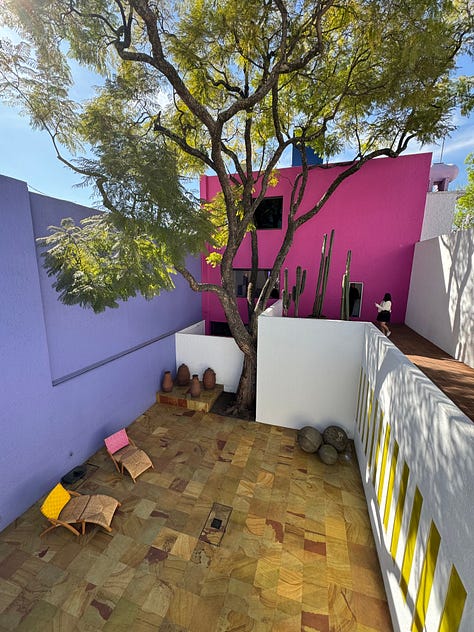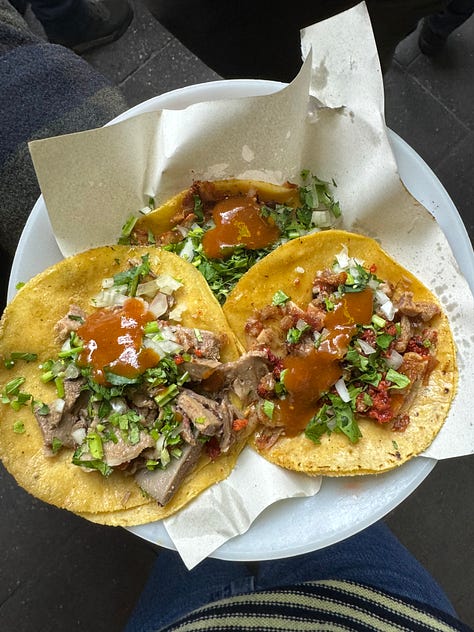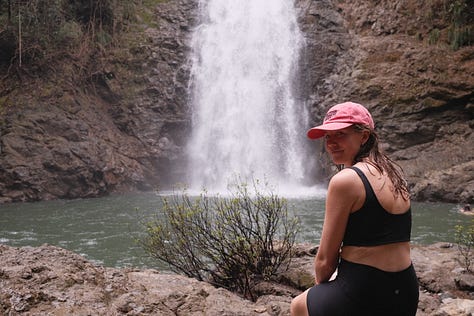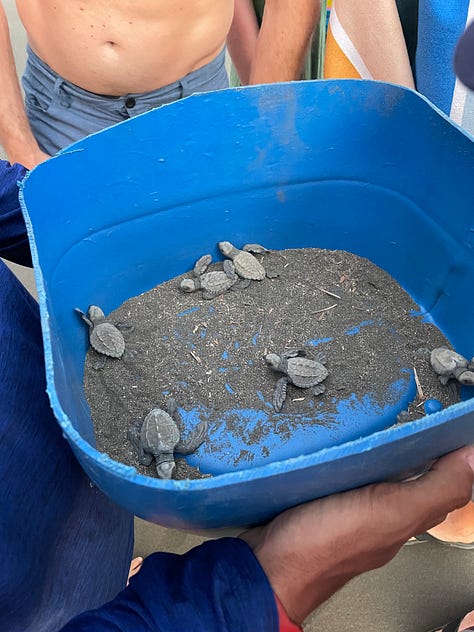There’s a huge difference between a good trip and a really great trip.
On a good trip, you follow the itinerary, hit all of the major tourist sites, and come back with a ton of Instagram photos and mostly pleasant memories. You stay in touristy neighborhoods, eating at the most popular restaurant hotspots, indulging in familiar comforts and predictable outcomes.
On a really great trip, you’re forced out of your comfort zone. There are unplanned encounters, secret spots along the way, and adventures to be uncovered. Whether it’s trying a bizarre new food or conquering a scary foreign metro system, you see the world through a new lens and learn something about yourself along the way. You explore neighborhoods off the beaten path where every alleyway holds a delightful surprise. You talk to locals, you go to hole-in-the-walls, you try new things and maybe conquer a few fears.









In other words, a good trip is like watching a blockbuster movie that everyone else has loved and seen (you know the whole script and you’re entertained) while a really great trip is like a Palme d'Or winning indie movie that resonates with you on a personal level (unexpected, deeply moving, profoundly heartfelt). Really good trip memories stay with you for a lifetime — they are the stories you tell your future kids, and they serve as dinner party stories for years to come.
It’s not easy planning a really great trip. They require more research, more attention, and the right headspace and intention setting, but I promise that if you want to start planning really great trips for yourself, the juice is worth the squeeze!
Note: Sometimes we need a relaxing + plain good trip instead of a really great trip and that’s totally ok too!
Here’s the secret formula I use to plan trips for myself and for clients. I promise if you use this framework for your own travels, your trips will pay out memory dividends for years to come.
Note: This is a LONG post, so it might be cut off in your email. Either read it in the Substack app or here to see it in its entirety.
Step one: set intentions and define the purpose for your trip
Reflect on your "why.” Before you even book your flight or map out your itinerary, ask yourself what you really want from this journey. Is it renewal, adventure, a dash of creativity, or maybe a little bit of all? Write down your thoughts. Think of it as crafting your personal “mission statement” for the trip — like a travel themed TED Talk you deliver to yourself. If you’re not going solo, think about who is coming on this trip with you, and make sure you’re also aligning the travel plans with their goals and wishes.
Create a visual manifesto. Whether it’s a mood board on Pinterest or a sketch in a journal, capture images, words, or even colors that evoke the vibe you want. Want to feel like you’re living in a Wes Anderson film? Or perhaps you want to enjoy a nature-forward trip? Visual cues can prime your mind for the experiences you want to attract.
Set a theme for the trip. Think about choosing a theme or mantra that resonates with you, like “embrace the unexpected” or “seek beauty in every moment.” This theme can serve as a lens through which you interpret every encounter, transforming even a simple walk in a new city into a chapter of your personal story.
Plan for spontaneity and flexibility. Ironically, setting intentions is as much about creating space for spontaneity as it is about outlining your desires! Decide that while you have a vision for what you want, you’re also open to detours and unplanned stretches of time. It’s like plotting the broad strokes of a jazz improv session… you know the key, but the magic happens in the unscripted moments.
Incorporate a ritual. Whether it’s a short meditation, a sunrise walk, or even a pre-trip playlist to get you in the mood (if you’re like me, it’s a Barry Can't Swim Spotify radio), create a ritual that marks the transition from everyday life to travel planning mode, and then implement it. Rituals ground you and signal to your brain that it’s time to shift perspectives.
Step two: do some initial research
Once you know which vibe you want to cultivate, then dive into researching what is actually realistic for your trip.
Ask yourself the following questions:
How much time do I have for this adventure? How much time are you ok with spending getting to the destination? Is it practical to go to three different places in one country, or should you stick to one city given your time frame?
What are the practical constraints? Besides time, yourself to really examine the nuts and bolts: budget, accessibility, and seasonality. Will your chosen destination allow you to experience the vibe without constant compromises? You might be craving a trip to a tropical island, but will it serve you if it’s in the middle of monsoon season?
Which logistical factors might influence your experience? Consider transportation, language barriers, safety, and even local customs. How might these factors add to or detract from the vibe you want to create? Can you work around any potential hurdles, or do they call for a rethink of your destination?

Step three: delegate trip planning roles
If you’re solo traveling, you’ll be wearing all of the hats, but if you’re traveling with a group or your partner, I really encourage everyone to take part in the planning. When traveling with a crew, you quickly discover that the magic of a group trip often hinges on how well everyone contributes. Dividing up responsibilities not only eases the planning load but also lets each person shine in an area that resonates with their strengths. Here are roles I’d recommend assigning:
The itinerary architect. This person curates the overall flow of the trip. They research must-see spots, draft a day-by-day outline, and leave room for free time and spontaneity (note: I usually only plan out half of the day, and leave the rest of the time for wandering… free time is necessary to avoid bickering and burnout). A well-structured plan gives everyone a roadmap to follow, while still allowing for those serendipitous detours. Think of them as the “plot twists” in your travel story.
The trip treasurer. This person keeps the trip financially on track. They’re responsible for developing a budget, tracking expenses in Splitwise, and suggesting cost-saving alternatives if necessary. Money matters can become a touchy subject when traveling in a group. Having one person who’s tuned into the numbers ensures you all stay in harmony, and avoid any awkward ignored Venmo requests.
The logistics guy. This person handles the nuts and bolts of travel logistics — booking accommodations, managing transportation, and ensuring everyone’s travel documents are in order. When someone is dedicated to managing details like flights, rental cars, or train schedules, the group can focus more on the fun parts of the trip.
The social strategist. This person is in charge of cultivating group dynamics and keeping the energy high. This person will manage the trip group chats or shared calendars. A cohesive group vibe can make or break a trip. This person ensures that everyone’s on the same page, pumped for the plans, and that no one is left wondering, “What’s happening next?”
Note: If you’re attending a trip where someone else has done all of this planning because that’s their style, please acknowledge them and thank them profusely! I recommend buying them a dinner or a drink on the trip as a small gesture, or picking up a souvenir along the way for them that serves as a memory of the vibe they’ve cultivated. Group planning is a lot of work!

Planning really great trips for clients is literally what I do for a living as a travel advisor. Clients compensate me for my research and for using my Really Good Trips™️ formula, so for that reason, the rest of my RGT™️ tips are for paying subscribers only. If you like what you see, please consider supporting Mindholiday by upgrading to a paid subscription. It’s only $5 a month, or $50 a year, and I promise I’ll make it worth your while!








